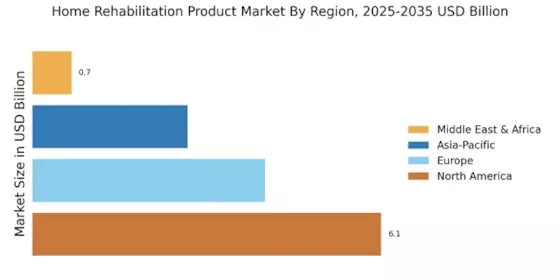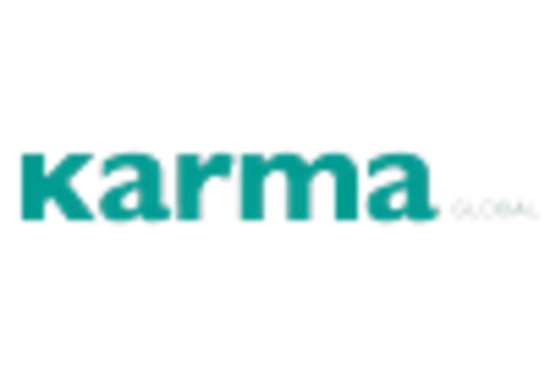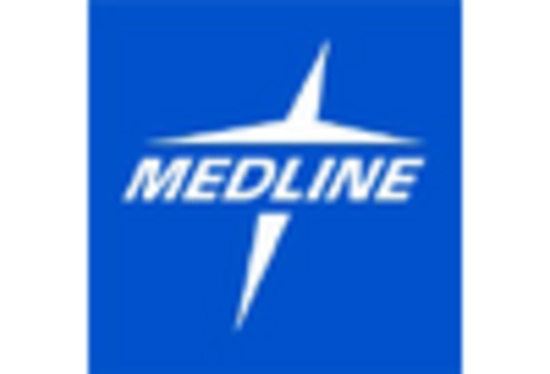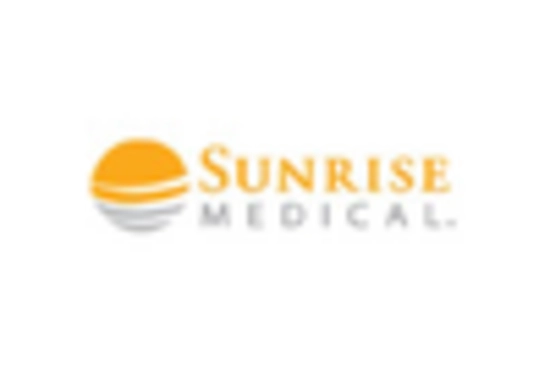The Home Rehabilitation Product Market is currently characterized by a dynamic competitive landscape, driven by an increasing demand for innovative solutions that enhance patient mobility and independence. Key players such as Invacare Corporation (US), Drive DeVilbiss Healthcare (US), and Ottobock SE & Co. KGaA (DE) are strategically positioning themselves through a combination of product innovation, regional expansion, and partnerships. Invacare Corporation (US) focuses on developing advanced mobility solutions, while Drive DeVilbiss Healthcare (US) emphasizes enhancing its product portfolio through strategic acquisitions. Ottobock SE & Co. KGaA (DE) is leveraging its expertise in prosthetics and orthotics to expand its rehabilitation product offerings, collectively shaping a competitive environment that prioritizes quality and technological advancement.
The market structure appears moderately fragmented, with numerous players competing for market share. Key business tactics such as localizing manufacturing and optimizing supply chains are becoming increasingly prevalent. For instance, companies are investing in regional production facilities to reduce lead times and enhance responsiveness to local market demands. This strategy not only improves operational efficiency but also allows for better customization of products to meet specific regional needs, thereby strengthening their competitive positions.
In August 2025, Invacare Corporation (US) announced the launch of a new line of smart wheelchairs equipped with IoT technology, enabling real-time health monitoring and enhanced user experience. This strategic move is significant as it aligns with the growing trend towards digital health solutions, potentially positioning Invacare as a leader in the integration of technology within rehabilitation products. The introduction of such innovative products may attract a tech-savvy demographic, thereby expanding their market reach.
In September 2025, Drive DeVilbiss Healthcare (US) completed the acquisition of a regional competitor specializing in home care products. This acquisition is likely to enhance Drive DeVilbiss's market presence and diversify its product offerings, allowing for a more comprehensive solution for home rehabilitation needs. The strategic importance of this move lies in the potential for increased market share and the ability to leverage synergies between the two companies’ product lines, ultimately benefiting consumers through a broader range of options.
In October 2025, Ottobock SE & Co. KGaA (DE) announced a partnership with a leading telehealth provider to integrate remote monitoring capabilities into its rehabilitation products. This collaboration is indicative of a broader trend towards digitalization in healthcare, suggesting that Ottobock is keen to enhance patient engagement and improve outcomes through technology. The strategic importance of this partnership lies in its potential to create a more holistic approach to rehabilitation, combining physical products with digital health solutions.
As of October 2025, the competitive trends within the Home Rehabilitation Product Market are increasingly defined by digitalization, sustainability, and the integration of artificial intelligence. Strategic alliances are playing a crucial role in shaping the landscape, as companies seek to combine their strengths to innovate and meet evolving consumer demands. Looking ahead, it appears that competitive differentiation will increasingly pivot from traditional price-based competition to a focus on innovation, technological advancements, and the reliability of supply chains, thereby fostering a more resilient and responsive market environment.


















Leave a Comment